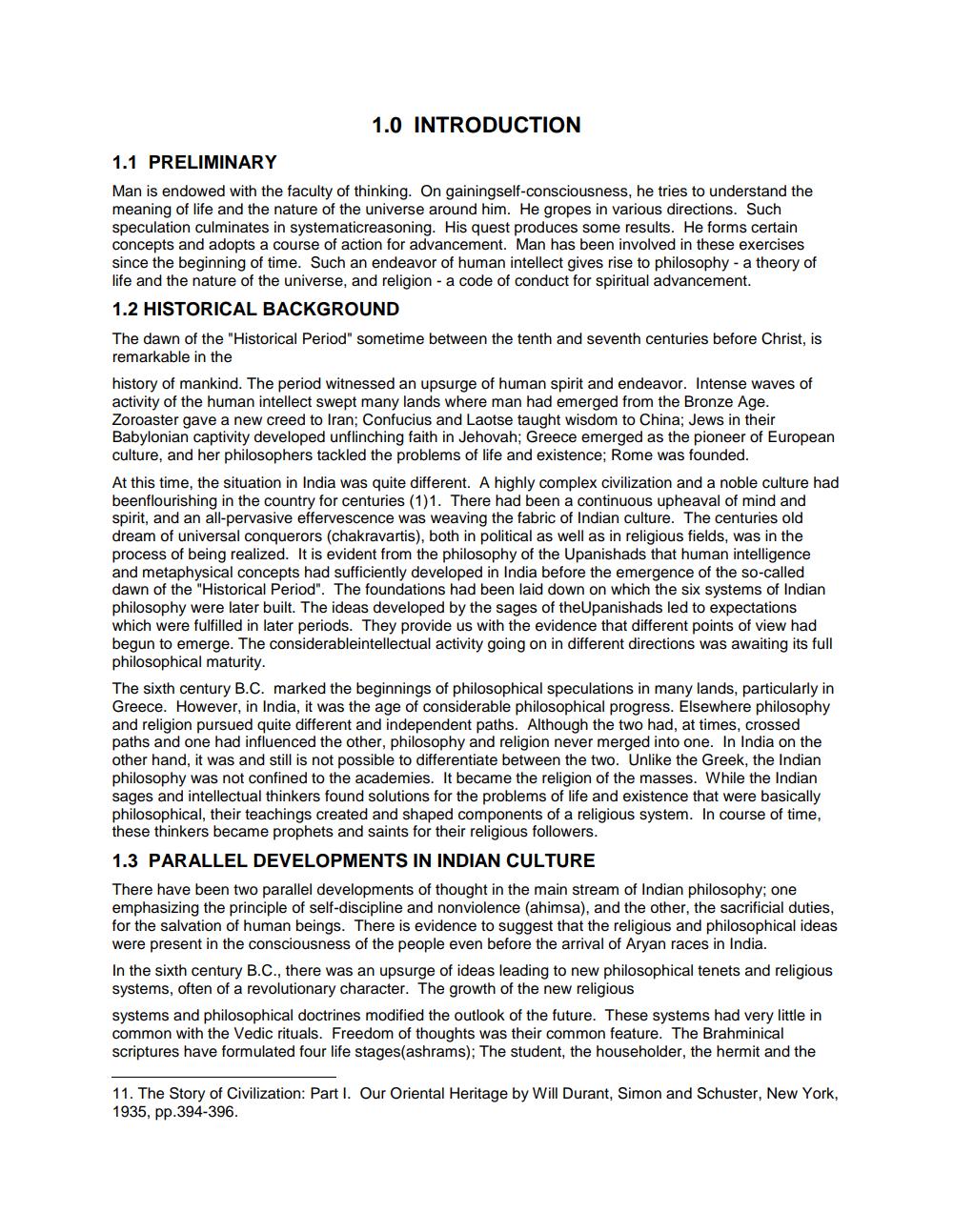Book Title: Panoramic View Of Jainism Author(s): Ratankumar Jain Publisher: Ratankumar Jain View full book textPage 3
________________ 1.0 INTRODUCTION 1.1 PRELIMINARY Man is endowed with the faculty of thinking. On gainingself-consciousness, he tries to understand the meaning of life and the nature of the universe around him. He gropes in various directions. Such speculation culminates in systematicreasoning. His quest produces some results. He forms certain concepts and adopts a course of action for advancement. Man has been involved in these exercises since the beginning of time. Such an endeavor of human intellect gives rise to philosophy - a theory of life and the nature of the universe, and religion - a code of conduct for spiritual advancement. 1.2 HISTORICAL BACKGROUND The dawn of the "Historical Period" sometime between the tenth and seventh centuries before Christ, is remarkable in the history of mankind. The period witnessed an upsurge of human spirit and endeavor. Intense waves of activity of the human intellect swept many lands where man had emerged from the Bronze Age. Zoroaster gave a new creed to Iran; Confucius and Laotse taught wisdom to China; Jews in their Babylonian captivity developed unflinching faith in Jehovah; Greece emerged as the pioneer of European culture, and her philosophers tackled the problems of life and existence; Rome was founded. At this time, the situation in India was quite different. A highly complex civilization and a noble culture had beenflourishing in the country for centuries (1)1. There had been a continuous upheaval of mind and spirit, and an all-pervasive effervescence was weaving the fabric of Indian culture. The centuries old dream of universal conquerors (chakravartis), both in political as well as in religious fields, was in the process of being realized. It is evident from the philosophy of the Upanishads that human intelligence and metaphysical concepts had sufficiently developed in India before the emergence of the so-called dawn of the "Historical Period". The foundations had been laid down on which the six systems of Indian philosophy were later built. The ideas developed by the sages of the Upanishads led to expectations which were fulfilled in later periods. They provide us with the evidence that different points of view had begun to emerge. The considerableintellectual activity going on in different directions was awaiting its full philosophical maturity. The sixth century B.C. marked the beginnings of philosophical speculations in many lands, particularly in Greece. However, in India, it was the age of considerable philosophical progress. Elsewhere philosophy and religion pursued quite different and independent paths. Although the two had, at times, crossed paths and one had influenced the other, philosophy and religion never merged into one. In India on the other hand, it was and still is not possible to differentiate between the two. Unlike the Greek, the Indian philosophy was not confined to the academies. It became the religion of the masses. While the Indian sages and intellectual thinkers found solutions for the problems of life and existence that were basically philosophical, their teachings created and shaped components of a religious system. In course of time, these thinkers became prophets and saints for their religious followers. 1.3 PARALLEL DEVELOPMENTS IN INDIAN CULTURE There have been two parallel developments of thought in the main stream of Indian philosophy; one emphasizing the principle of self-discipline and nonviolence (ahimsa), and the other, the sacrificial duties, for the salvation of human beings. There is evidence to suggest that the religious and philosophical ideas were present in the consciousness of the people even before the arrival of Aryan races in India. In the sixth century B.C., there was an upsurge of ideas leading to new philosophical tenets and religious systems, often of a revolutionary character. The growth of the new religious systems and philosophical doctrines modified the outlook of the future. These systems had very little in common with the Vedic rituals. Freedom of thoughts was their common feature. The Brahminical scriptures have formulated four life stages(ashrams): The student, the householder, the hermit and the 11. The Story of Civilization: Part I. Our Oriental Heritage by Will Durant, Simon and Schuster, New York, 1935, pp.394-396.Page Navigation
1 2 3 4 5 6 7 8 9 10 11 12 13 14 15 16 17 18
